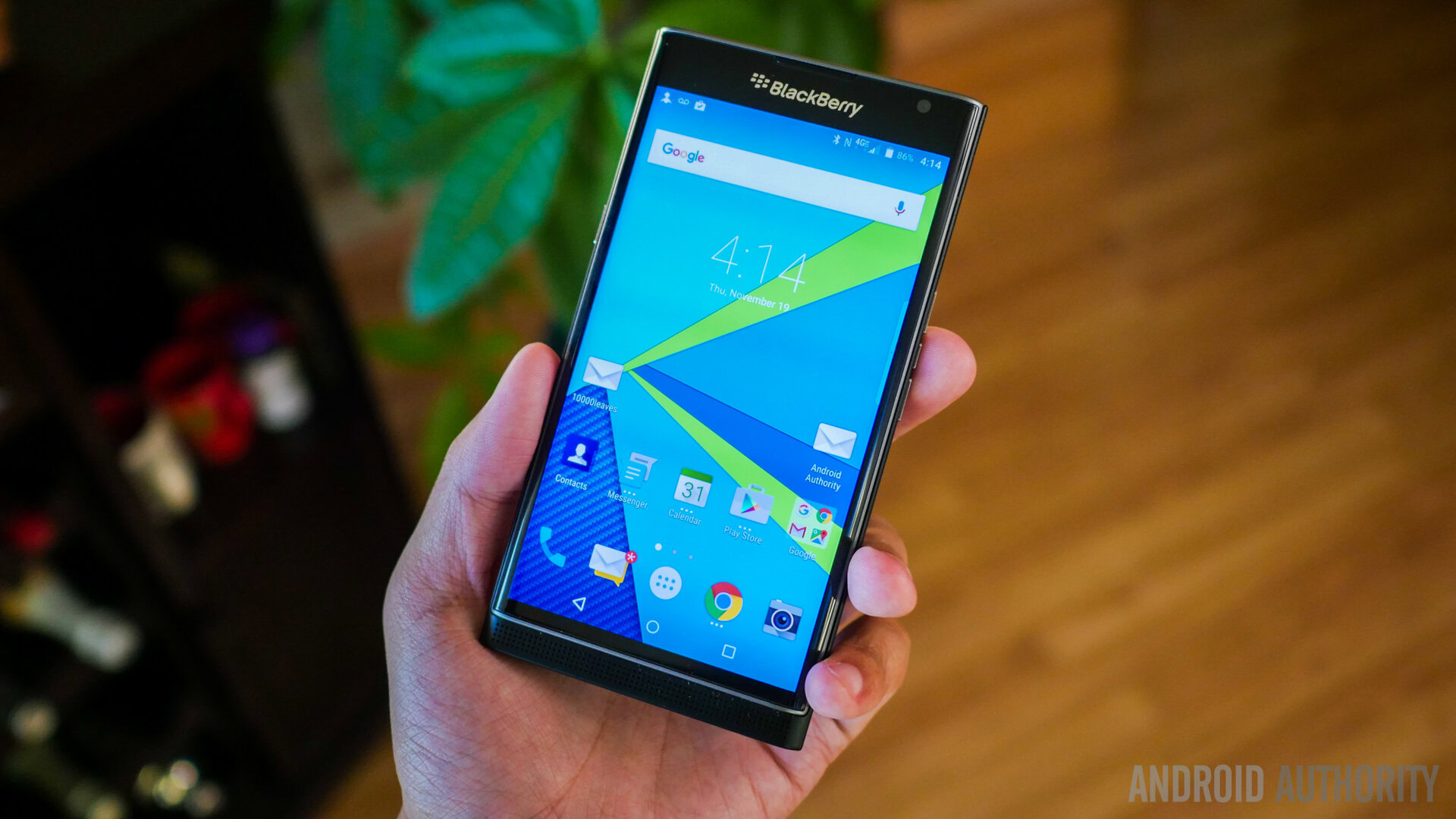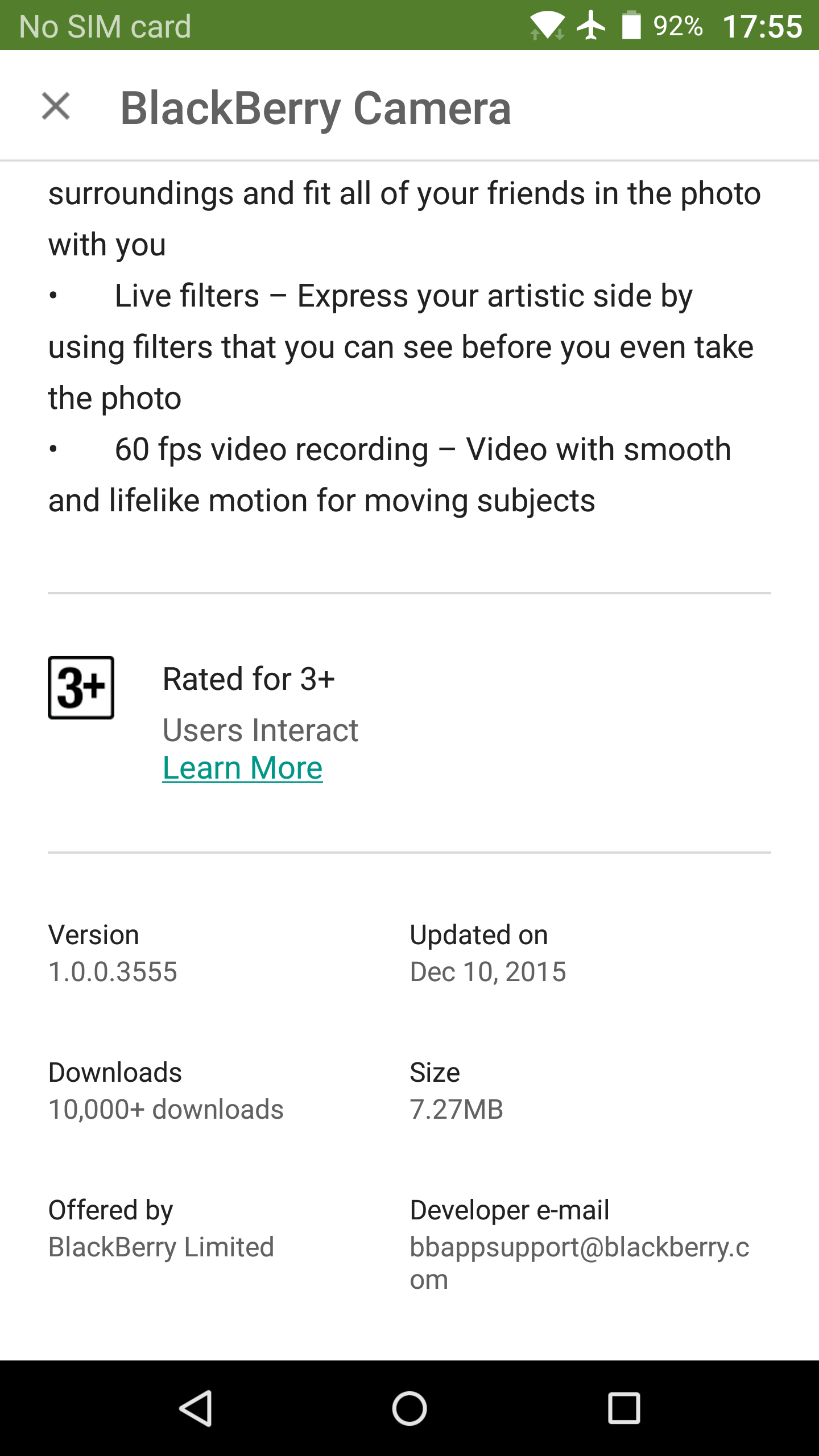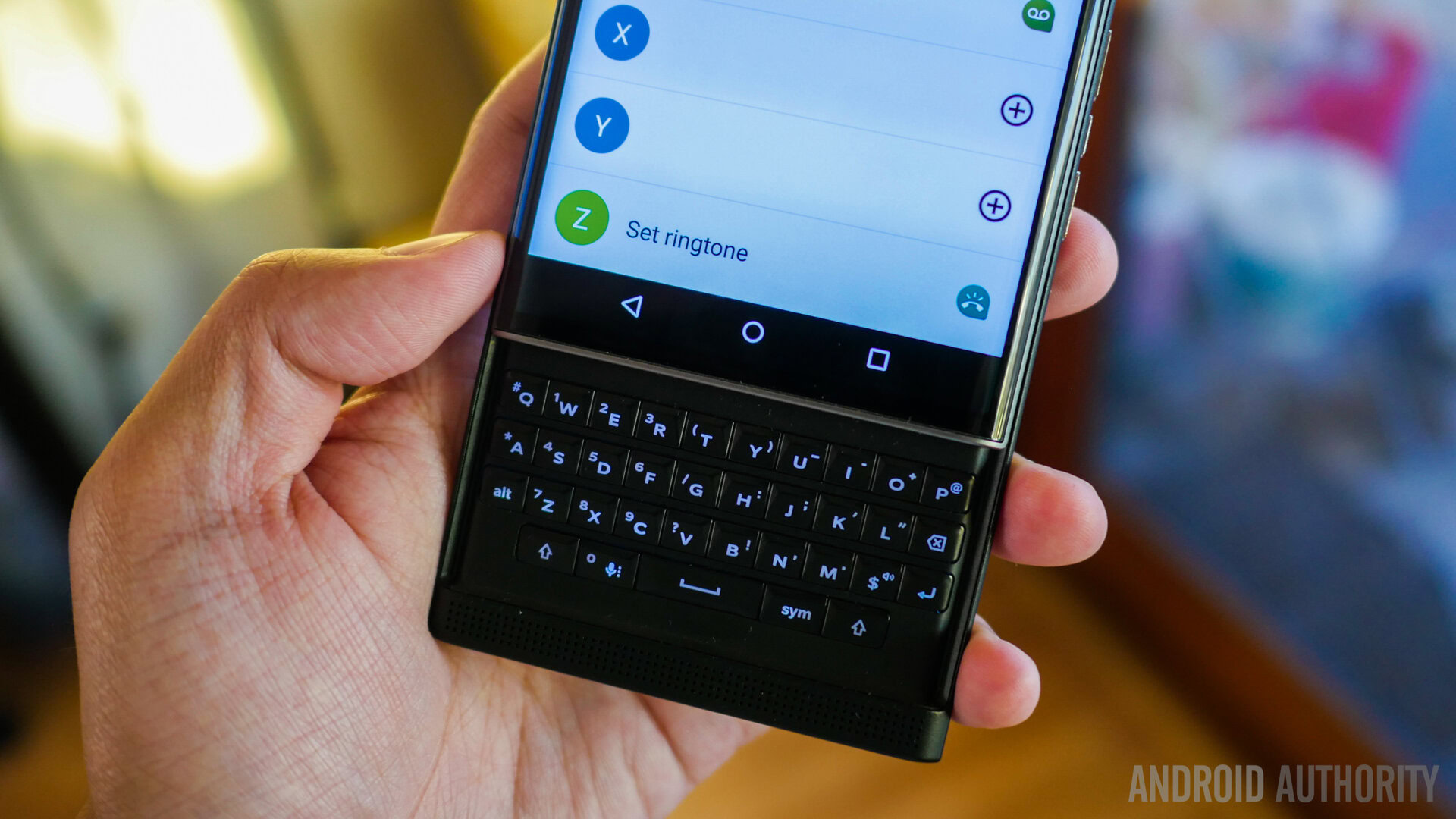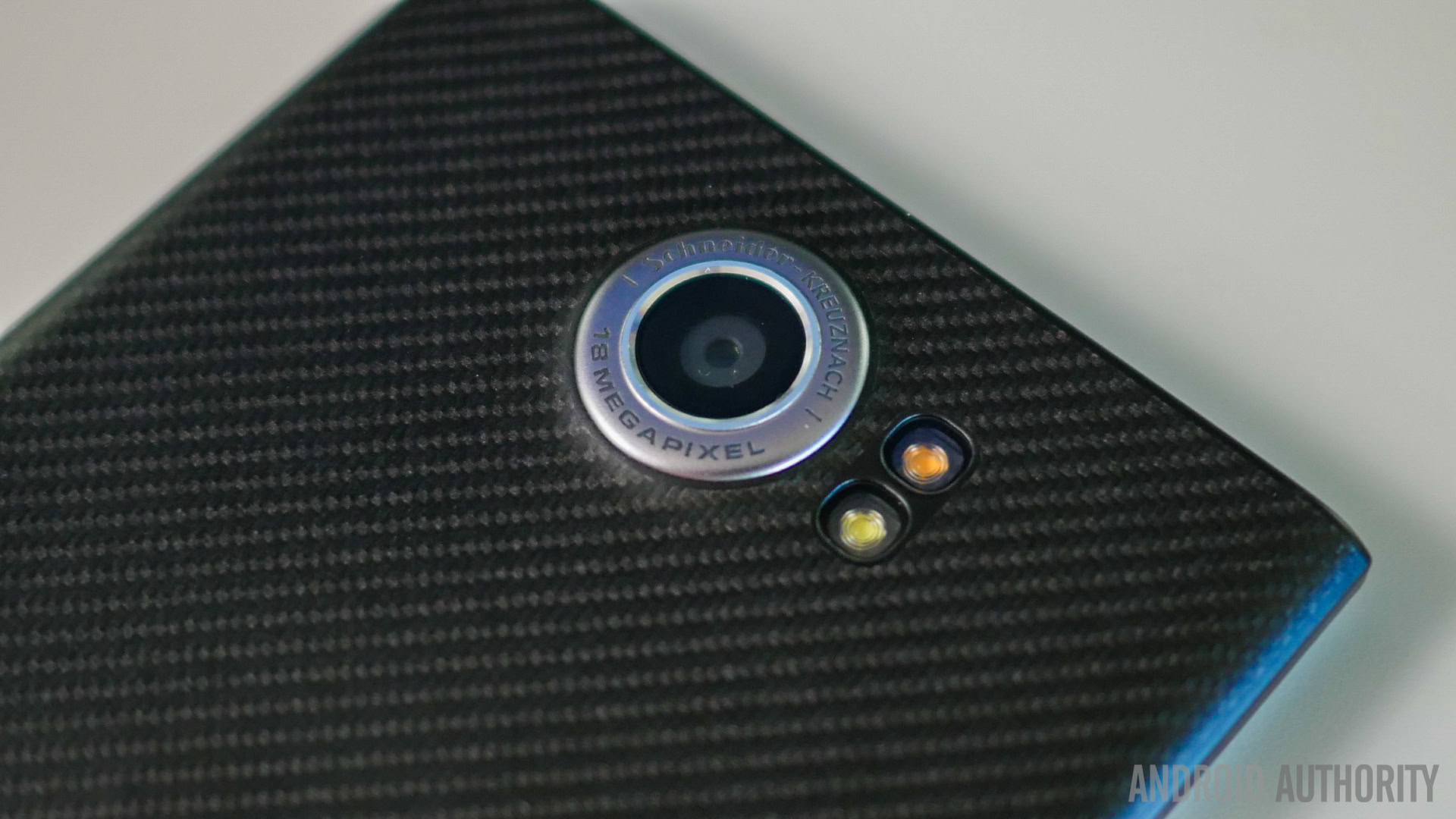Affiliate links on Android Authority may earn us a commission. Learn more.
BlackBerry sold under 50,000 Priv units, Play Store data suggests

Late last week, BlackBerry CEO John Chen shared some very optimistic guidance about his company’s future. Despite device sales being around 200,000 units lower than expected (700,000 as opposed to 900,000), the OEM managed to severely reduce losses incurred during the quarter, ultimately sending the stock price up. Much discussion was made about that number however: 700,000. Was it Priv sales, or was it company-wide total device sales? Indeed the latter was correct.
The question thus on everyone’s minds is how much of a success is the Priv? Mr. Chen did not mention any specific numbers, just that the development costs are lower than with traditional BlackBerry OS handsets, and that the price will inevitably fall around Mobile World Congress this coming winter. And yet, ironically enough it would seem that the sales data is right in front of our collective faces: the Google Play Store.
As the Play Store lists an approximated number of installs for every app, it is simply a matter of checking various BlackBerry-related ones to find the results. Note that, on a smartphone, these apps will only appear on search if you have a Priv.

As can be seen above, the Install count is listed as “Over 10,000”. The same holds true for the other apps as well:
On a PC you can find them simply by searching the Google Play Store website, however there will be a note about a lack of device compatibility. Nonetheless, the full browser Play Store lists the number of installs as between 10,000 and 50,000.
Play it by the numbers
Because the Priv apps can only be installed on the Priv itself, this offers a very good indication of the kind of sales numbers BlackBerry has achieved. At worst, there are possibly 10,001 sold, and at most, there are possibly 50,000. For the sake of argument, there is the possibility that the statistics on the Play Store are not accurate. Even assuming that installs are double that which is reported, that would still give a range between 20,002 and 100,000 units.
It is difficult to make heads or tails of this presumed purchase point. Considering that BlackBerry sold approximately 700,000 total handsets in Q3, it would mean the Priv was not a major seller. Granted it was only available for 2 weeks before the end of Q3, but many devices typically see the highest sales in the initial release window.
It is also important to mention that the Priv is only available in select markets, with dozens more coming in the future. In the USA specifically, it is only sold on AT&T’s network.
Pricey Privilege: Too much for too long? Not so, it seems.
Last month, an in-depth look was offered at the pricing structure of the BlackBerry Priv. The piece considered the issue of a justification for the high cost, and asked if that might ultimately result in diminished sales. When Mr.Chen disclosed Q3 fiscal performance last Friday, he made a curious point:
Mr. Chen explained that in switching to Android, a cost-savings break has been added to the equation of Priv production, “because we don’t have to do everything ourselves in the operating system world.”
This roughly translates to a product that cost less to produce than it otherwise would have had it been running a new BlackBerry OS build. Furthermore, the display on the device – while AMOLED – is decidedly not of the same quality and clarity as those used in Samsung’s 2015 flagships. In an interview with Bloomberg, Chen disclosed the fact that Samsung is producing the panels. Clearly the display parts purchased were not as premium as it could be, though it could be a result of either party’s initiative.
Interestingly enough it seems that BlackBerry itself knows the Priv is perhaps too expensive. In the earnings call last week, the following exchange took place:
Paul Treiber – RBC Capital MarketsIn regards to the pricing and margins on the PRIV, without getting into specifics, how do you see pricing and margins in the PRIV trending through its life cycle? What are some of the strategies to sustain the pricing power through its life cycle? And then can you just contrast that versus what you’ve seen with other BlackBerry 10 devices?John Chen – Executive Chairman & CEOGood question. So we have a model obviously, of pricing. I think the pricing will hold pretty strong for the next quarter in Q4. We already have seen some of the POs coming in. Especially in new introductions, margin is usually pretty strong. But I’m not — but you all know the market very well.In about Mobile World Congress time, we will see introduction of new technology from our competitors. We have maybe a midlife kicker coming in around that time, but I expect ourselves to have to reduce our price to be competitive.We do have some unique features at PRIV, as being well-received especially in the security world, in the privacy world. But we obviously won’t fool ourselves to expect that they will continue to maintain the high prices that we could get today. So we have our natural trend and a model that goes through 12 months out and then after 12 months, we’re going to have to reexamine that.
It is in this exchange that CEO John Chen has basically admitted that the price of the Priv will need to decrease come Mobile World Congress in February. Ironically speaking, many of the features of the Priv are already classified as “mid-tier” by some: the phone has a Snapdragon 808 SoC as opposed to an 810. The phone has 3GB or RAM as opposed to 4GB. The phone does not appear to have the latest generation AMOLED display. The casing of the phone is made of plastic, not metal or glass.
If the price will begin to fall in February – assuming retailers don’t drop it first – the profit margin for each device sold will thereby also decrease. In the event BlackBerry can then start to sell mass numbers of the handset, it would ultimately result in a positive financial gain. On the other hand, if the price drop is such that the profit margin becomes too small or non-existent entirely, it wouldn’t make much of a difference with respect to the bottom like.

Notes on the numbers
The point has been raised that Play Store download/install numbers do not count pre-installed apps. This is a valid argument and one that was actually explained back in 2013. Even so, as mentioned earlier these BlackBerry apps can only be installed on a Priv. If the tally will increase the first time someone with a Priv downloads an app update, it still implies the total number of handsets sold is quite low. Also consider:
- As mentioned in this piece, the Priv was only available for 2 weeks prior to the end of BlackBerry’s Q3 fiscal period. Additionally it was only sold in a few markets with even further limited availability at that.
- Reports indicated that the Priv was sold out initially at some venues and thus potential sales would possibly be affected.
- The 700,000 units sold report does not correspond to the Priv exclusively. Consider, as mentioned earlier, that in Q2 BlackBerry sold 800,000 devices, none of which were the Priv. The company has its entire range of existing BB OS products – including the Passport – that would contribute to its sales.
- The tallies on the Play Store are consistent across the board for Priv-exclusive apps. It’s not as if one app has 10,000-50,000 and another has 100,000-500,000. The only time such a difference does occur is on apps that are not exclusive to the Priv, such as “BBES12 Client” which is listed as 5,000,000-10,000,000 downloads and is basically compatible with virtually every phone on the market.
- Consider that early adopters of the Priv are theoretically more likely to be familiar with technology and keeping up-to-date with it, thus are more likely to update their apps than random mainstream users who purchase a device for free long after it has been released.
Thus while it is fair to point out the Play Store app data itself may not be perfectly reflective of the exact number of devices sold, based on a variety of factors, a handful of which are listed above, it is logical to extrapolate the figures provided do paint a plausible picture of the product’s performance.
Wrap Up

Truth be told, with BlackBerry itself choosing the conceal the actual sales figures of the Priv, the best approximation that can be made is from the Google Play Store installation tallies. As they are not particularly high, it would suggest that the Priv is not a smash success that it presumably needs to become.
We would love to hear your thoughts on this possible sales situation! Would even 50,000 units sold be considerably a success for BlackBerry at it enters the Android market this late?